In the field: Navigating the 2025 planting season
With an interesting spring behind us and a hopeful summer season ahead we want to take a moment to reflect on the highs, lows, and lessons learned from this 2025 planting season:
East Region
Indiana and Ohio planting progress was delayed due to an overall cooler and wetter spring. Due to wet soils, the USDA-National Agricultural Statistics Service’s crop progress report listed a decrease in days suitable for fieldwork in the June 16, 2025, report, with Indiana reporting 4.4 days compared to 6.2 last year and OH reporting only 3.9 days compared to 6.4 days at this time last year (USDA-NASS, 2025).

Figure 1. Planting soybeans into a cover crop in Indiana (photo courtesy USDA-NRCS).
Despite wetter conditions, both corn and soybean planting progress largely caught up with five-year averages in both states. By June 9, 93% of Indiana corn was planted compared to the 96% average. Ohio corn, however, planted acres of 89% were below the 94% average. Both corn and soybean emergence were slightly lower in both states.
“Soybeans were planted on time,” explains Cargill RegenConnect grower Mark Fultz, who farms in west-central Indiana near the Illinois border, “but the cooler weather really slowed down emergence. They have mostly grown out of it by now.”
Cargill RegenConnect grower Ethan Harr, who farms in central Ohio, added that there is a wide range of corn maturities out there, with some fields being planted as recently as last week and some fields nearly tasseling and requiring fungicide applications already.
Localized conditions from past intense precipitation have prevented planting in some areas and growers are encouraged to evaluate alternatives, like those below, if prevented planting is expected:
- Evaluate the economic feasibility of replanting a cash crop.
- Follow general recommendations from Ohio State grain specialist Laura Lindsey when replanting: “For now, we recommend higher seeding rates, narrower row widths, and selecting the latest maturing varieties that will still mature before frost” (Ohio State University CFAES, 2025).
- Consider planting a summer cover crop to build soil or for livestock forage.
Surplus soil moisture and cooler spring growing conditions have increased the possibilities of pest and pathogen problems. Wheat acres close to harvest are at risk for developing fusarium head blight (Ohio State University CFAES, 2025) and slug outbreaks may be more common (Obermeyer and Krupke, 2017). Adequate soil moisture will be important for crop growth given warmer-than-average predicted temperatures to come (Figure 2).
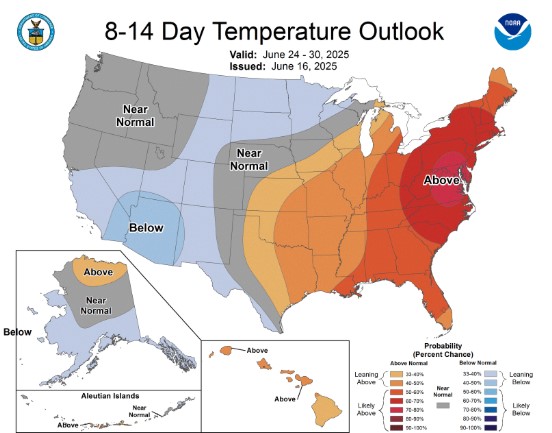
Figure 2. 8-14 day temperature outlook from the Climate Prediction Center, National Weather Service.
Upper Midwest Region
Favorable soil conditions and cooperative spring weather allowed most crops to be planted 1–2 weeks ahead of recent averages across the upper Midwest. While crop emergence has been mixed due to cool, below-average temperatures and intermittent rains, trends remain near or slightly ahead of average (USDA-NASS 2025).
In addition to row crop progress, cover crop management is also underway. Many farmers reported terminating their cover crops before or at planting this year with minimal delays. Though herbicide termination remains the preferred method for a complete termination of overwintering cover crops, farms continue to explore alternative methods of termination like roller crimping (pinches the cuticle and stem of the cereal rye (Figure 3)).
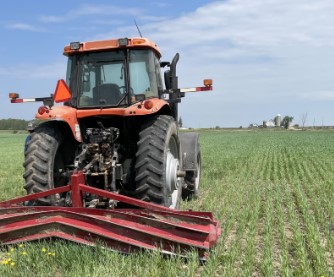
Figure 3. Cereal Rye roller crimping demonstration at UW-Madison Marshfield Ag Research Station (photo courtesy Michael Geissinger).
Cool, below-average temperatures and intermittent rains have left parts of the region, specifically Wisconsin, central Minnesota, and parts of northern South Dakota and North Dakota, behind schedule on growing degree days (see Figure 4 below). Because it is so early in the growing season, these gaps are likely to be made up through higher temperatures forecasted in the coming weeks and crops should progress normally, or slightly ahead of schedule.
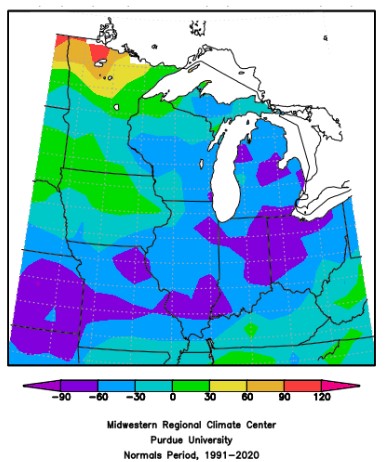
Figure 4. 2025 Modified Growing Degree Days through June 17, 2025, compared to 1991-2020 average. (Purdue MRCC 2025).
It’s worth noting that early-season field conditions have generally supported timely herbicide applications and nutrient management. In casual conversations with Cargill RegenConnect growers, most farms across the region have successfully implemented integrated pest management (IPM) strategies to complete early season control of weeds and insect pests. Despite successful management, farmers and agronomists should continue scouting for pest pressure and diseases. Special attention may need to be paid toward scouting for and managing tar spot this year. Tar spot has already been detected in some areas further south, though the progression of tar spot or other pests will depend heavily on local conditions (Crop Protection Network, 2025).
Farmers and agronomists should also plan to scout for nutrient deficiencies this season, especially nitrogen and sulfur deficiencies on acreage that had long periods of soaking rains or standing water that increased the risk of nutrient loss (for example, west central Minnesota near Traverse County).
With proper crop scouting and some much-needed heat and sunlight in the forecast, farmers in the upper Midwest are slated for a safe and successful growing season.
West Region
The average planting progress for Missouri and Kansas is overall ahead of schedule. Adequate moisture, warm temperatures, and favorable soil conditions across the majority of the region resulted in a fast pasted planting season. Despite the majority of the region having favorable conditions, there were pockets of excessive moisture that led to delayed and drowned out areas. These areas saw excess moisture that prolonged planting and multiple replant attempts.
Missouri had a wide range of planting conditions across the state. Early April brought wet weather and cooler temperatures that delayed corn and soybean planting for many growers. NASS reported in the week of April 6th that 6% of corn was planted compared to 23% in 2024. This slight delay in corn planting sets for an action-packed end to the month of April. Corn and soybean acres jumped 60% percent in just 3 short weeks along with beans rising 45%. (USSDA-NASS)
Kansas, unlike Missouri, has seen similar planting progress from last year. USSDA reported at the end of April that Kansas was just 2% ahead of both corn and soybean planting last year. Along with planting progress, wheat is seeing the effects of the weather across Kansas and is. Wheat overall is slightly behind last year but well ahead of the 5-year average. This year’s wheat crop has had favorable conditions across the region carrying high hopes for a few good rain events as temperatures are forecasted to ramp up heading into the summer months.
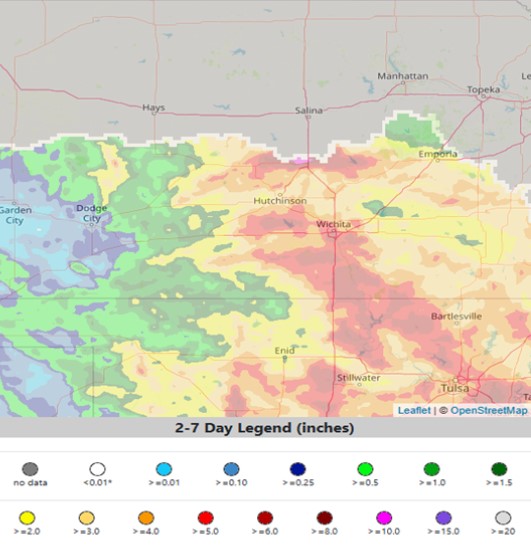
Figure 5. Cumulative Rainfall map. USGS.
Severe weather season is in full swing and has impacted areas within Kansas and Missouri over the course of the first two weeks of June. One area in particular that was hit hard with weather over the first part of June was included the south-central region of Kansas. During the week of June 15, areas saw precipitation ranging from four to eight inches with pockets of ten or more inches. These totals came from a series of storm systems that not only brought flooding but winds in excess of more than 90 mph. Crop damage has been widespread with growers reporting some severe corn and wheat wind damage.
Summer temperatures will set in as we get closer to July. It is important for growers to actively scout for disease and pest pressure. While many areas have been receiving timely rain, it has also set back many growers from their post herbicide applications. Warm and wet conditions create a recipe for rapid weed growth as crops are getting into more advanced growth stages. It is also very important for growers to pay close attention to herbicide labels on weed size and crop stages for accurate and successful application.
Iowa and Illinois Region
Planting season in Iowa and Illinois was variable due to cooler temperatures early on and sporadic rainfall over much of early spring. Overall, planting season started slightly behind schedule. With favorable conditions in the forecast, a large amount of the crop was planted over the second half of April but soon progress slowed. The month of May started with wetter conditions and the last portion of the corn and soybean crop was planted in the first two weeks of the month. In certain areas of Iowa and Illinois early season emergence and plant vigor was an issue.
Tom Fitzer, a Cargill RegenConnect grower out of Durant, Iowa, experienced nearly perfect planting conditions at the end of April but slower germination rates. “The weather that followed our main planting window really impeded growth and our final plant stand”, Tom explained. “Planting conditions were great, but we had questionable emergence at first.”.
In northern Illinois and across central Iowa, several areas reported slow emergence and replanting on corn and soybeans in areas that were impacted by conditions during storms in the last days of April. Many of these fields have experienced favorable weather in the past month and the crop condition is very good overall as we head into summer.
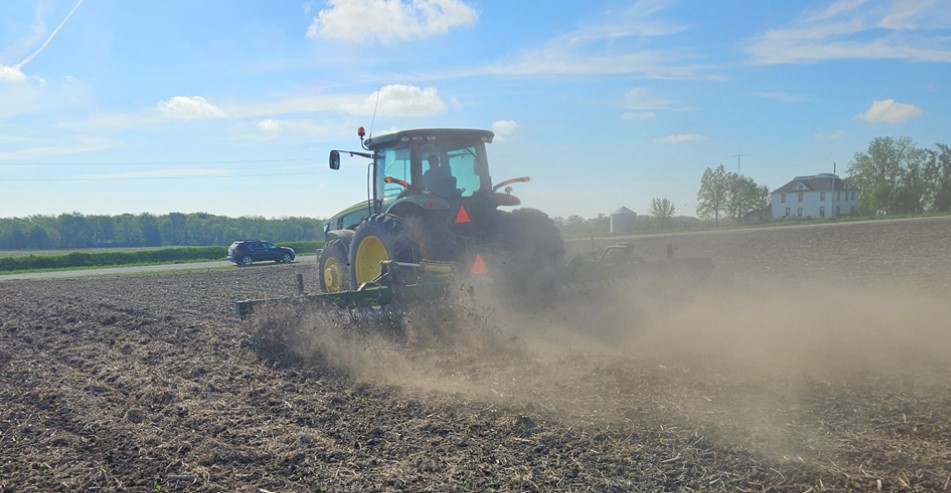
Figure 6. A rotary hoe runs in an Iowa corn field with limited emergence on May 13.
Resources:
USDA-NASS. 2025. Crop Progress (June and May 2025). ISSN: 1948-3007. Accessed 17 June 2025.
Ohio State University CFAES. 2025. Persistent rains, cool temps slow Ohio’s 2025 planting season. Morning AgClips. Accessed 17 June 2025.
Slugs, the weather forecast is perfect. 2017. Purdue Pest & Crop Newsletter. Accessed 17 June 2025.
Modified Growing Degree Days, Purdue/NOAA. Accessed 18 June 2025.
Crop Protection Network Tar Spot of Corn Map. Accessed 18 June 2025.
USDA-NASS. 2025. Crop Progress (April – June 2025) ISSN: 1948-3007. Accessed 18 June 2025.
USGS Cumulative Rainfall Map. Accessed 18 June 2025
National Weather Service Central Mississippi Valley Forecasted Temperatures. Accessed 18 June 2025.
